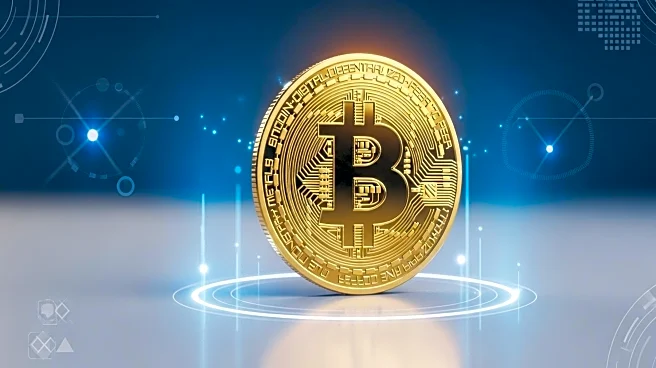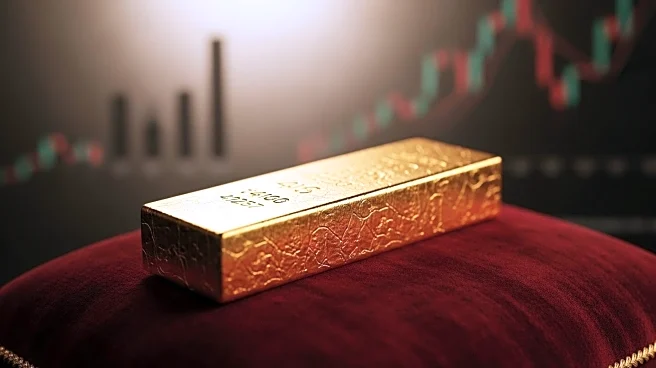What is the story about?
What's Happening?
Gold prices have hit $4,000 per ounce for the first time, as investors look for a safe haven amid a weaker dollar, geopolitical volatility, and economic uncertainty. The price increase is driven by strong buying from central banks and retail investors, with China and other countries diversifying away from U.S. Treasurys. The Federal Reserve's recent interest rate cut has made short-term debt instruments less attractive, further boosting gold demand. Prominent investors like Ray Dalio are recommending significant gold allocations in portfolios, while Bank of America warns of potential price corrections.
Why It's Important?
The surge in gold prices underscores the impact of global economic and political instability on investment strategies. As the U.S. dollar weakens and traditional financial instruments lose appeal, gold is emerging as a preferred asset for risk-averse investors. This trend could influence central bank policies and affect global trade relations, particularly as countries seek alternatives to U.S. financial dominance. The implications for U.S. economic policy and investor behavior are significant, with potential shifts in asset allocation and market dynamics.
What's Next?
The Federal Reserve is expected to make further interest rate cuts, which could continue to drive gold prices higher. Investors and policymakers will be closely monitoring economic indicators and geopolitical developments to assess the impact on gold demand and market stability. The potential for price corrections, as warned by Bank of America, may lead to cautious investment strategies and adjustments in portfolio allocations.
Beyond the Headlines
The increasing reliance on gold as a safe haven asset highlights broader concerns about economic stability and the effectiveness of traditional financial instruments. This shift may lead to long-term changes in investment strategies and economic policies, as countries and investors seek to mitigate risks associated with U.S. economic and political actions. The cultural and ethical dimensions of this trend, particularly in terms of global equity and financial inclusion, merit further exploration.
AI Generated Content
Do you find this article useful?













